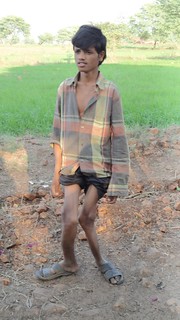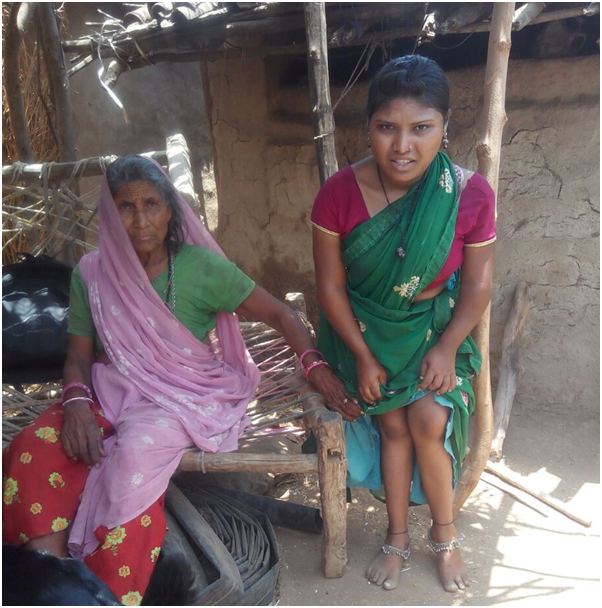Fluoride and fluorosis in India
Have you traveled in rural India and seen children with stained teeth wondering how they could get tobacco-like stains at a young age? Have you seen adults in their mid-40s and 50s with bent shoulders complaining of extreme pain and being bed ridden for years? Or have you asked why the toothpaste adds fluoride whereas we hear of a disease called fluorosis in India caused by high fluoride?
The discovery of high consumption of fluoride being harmful for humans and animals was made in India in 1937 and since then, there has been a long history of observation of fluorosis in many parts of India and across the world. Though mainly occurring due to high consumption of fluoride from water, it has also been reported to occur through consumption of food, inhalation of fumes and other toxic environments.
When we first hear about this problem of fluoride and fluorosis, it seems quite strange. How can clear looking water without any taste or odour cause something like this to happen? Also, even a small amount as 1 to 1.5 mg per litre of fluoride in water can be harmful. What makes it stranger is that why do only children get affected with dental stains of fluorosis (and not adults or even children beyond a certain age)? What really happens to our bones that they get twisted, deformed and people get crippled at relatively early age? View the details regarding flurosis on Fluoride and Fluorosis by Fluorosis Research and Rural Development Foundation.
Dental and skeletal fluorosis

There are two main types of fluorosis, namely dental and skeletal fluorosis. Dental fluorosis is caused by continuous exposures to high concentrations of fluoride during tooth development, leading to enamel with low mineral content and increased porosity. The critical period for risk to dental fluorosis is between 1 and 4 years of age. After the age of 8 when permanent teeth have established, there is lesser risk to dental fluorosis.
Skeletal fluorosis is developed by the disturbance of calcium metabolism in the formation of bones of the body. It results in softening and weakening of bones resulting in deformities leading to crippling. It can also aggravate calcium related disorders such as rickets in children and osteoporosis mainly in adults. For people who are exposed to high fluoride levels for decades, severe cases of crippling can occur. View the details on Fluoride and Fluorosis by INREM Foundation.
Harmful levels of fluoride and their effect on the body
So, coming back to our earlier questions, let us understand that fluoride in very small amount like what we get from toothpastes cannot lead to the kind of skeletal fluorosis we see in India today. A daily intake of around 10-20 mg/day for adults and as low as 3-8 mg/day for children has been found to be harmful. Using these limits, the rough water safety limits of 1 mg/l of 1.5 mg/l have been arrived at in the context of India.
In 20 states of India, more than 100 districts across the country and probably more than 60 million people are consuming drinking water which has fluoride greater than 1 mg/l. Since local food can also get irrigated by the same water, food also contains fluoride in these places. This makes the total daily consumption of fluoride more than 10 mg/day which is always harmful for adults and more so for children.
What makes excess fluoride bad for us is also that it affects many processes in the body. Firstly, the body requirement for calcium increases. This makes specific people such as women in pregnancy and lactation, growing children and adults beyond the age of 40, more prone to calcium related problems. Apart from this, iron absorption is reduced due the fluoride. This is really important to all of us and especially for pregnant women for whom iron deficiency anemia and related problems are a serious cause of under-weight and unhealthy children at birth.
Does this all make the situation worse and too complex difficult to act on? The answer should be ‘yes’ and ‘no’. On one hand, ‘yes’ because when we think of it, water scarcity itself is a big problem for people. Just getting thirsty throats quenched itself is a big task. Looking at this as a health problem, fluorosis does not yet present itself as a problem of national importance. Also in front of calorie and protein deficiency, calcium and iron come lower down, but still are important.
What can be done to deal with the problem
However, when we put all these together and the possibility of irreversible deformities for large number of people, the only answer can be that we have to act on this and ‘Now’. What can really be done about this?
- The very first beginning is from simple detection. This can be done by simple testing of water for fluoride in an indicative manner with field kits and observation of children’s teeth for stains. For example, most of us do not know that it is very simple to test for fluoride in few seconds with a field kit that would cost just a few rupees to test each time. Imagine saving yourself from fluorosis with just a small investment as that. Definitely there are more complex instruments such as an Ion electrode which can measure fluoride more accurately. It is also possible to test for fluoride in urine and blood, but very few labs in the country exist today for that. View the details of the Water quality testing kits for field use to know more.
- Finding safer local sources of water with lesser or no fluoride. In many fluoride affected places, there is a nearby source of water which is free from fluoride. It is just that we don’t know about it, or that it is not accessible to all, or that it may be affected by other forms of contamination such as poor sanitation practices. So the first level solution could just be to identify such a source, have the community come together to make available for all, use it judiciously and improve the quality in a simple way.
- Basic diet improvement to include calcium rich green leaves, milk, eggs, and rich sources of Vitamin C and antioxidants such as Amla, Lemon, Spinach and local sources such as Moringa and Cassia Tora. View some of the Solutions for safe water and nutrition to know more about efforts that can be undertaken to prevent fluorosis in the community.
- As they say, a good beginning is a job well done. Much more can be done on fluoride and fluorosis such as removal of fluoride (activated alumina and reverse osmosis), saving rainwater directly from rooftops or through dams and wells, advanced detection of water and health, and so on. This film on Rainwater harvesting to tackle fluoride provides an example of how rainwater harvesting can be useful to deal with the problem of fluoride contamination of water. View the frequently asked questions on fluorosis and fluorosis mitigation here.
But to begin with it is more important to recognize that this is a problem. To recognize that this is a problem of the current and future. If we look away, we are to lose. So let us act on it ‘Now’.
| The Fluoride Knowledge and Action Network |
|---|
|
The Fluoride Knowledge and Action Network is a dynamic network of partner organisations and individual members that aims at providing a platform for sharing and interchanging of information related to fluorosis, building upon each other’s experiences, and spreading information on emerging lessons and solutions to encourage action to bring about a significant change in the fluorosis situation in the country.
To join the network, please mail us at contact@indiawaterportal.org or visit us at www.fluorideindia.org. |















